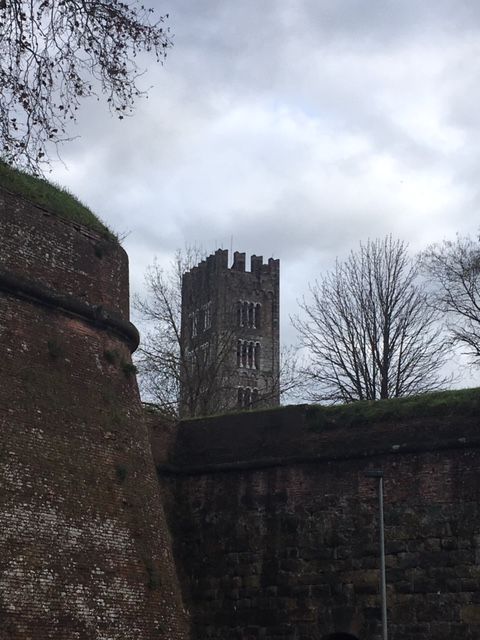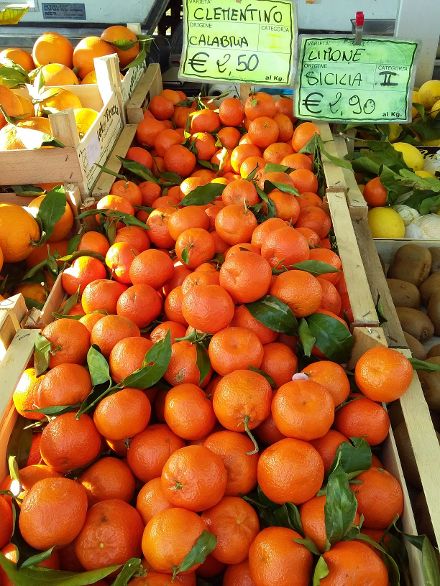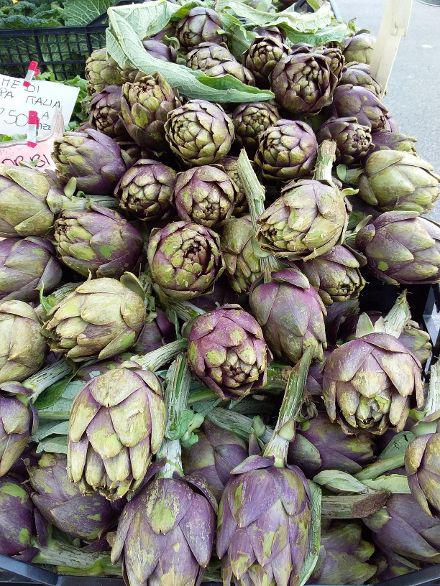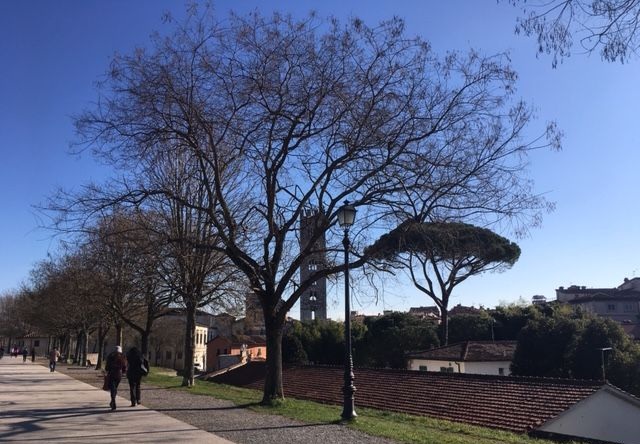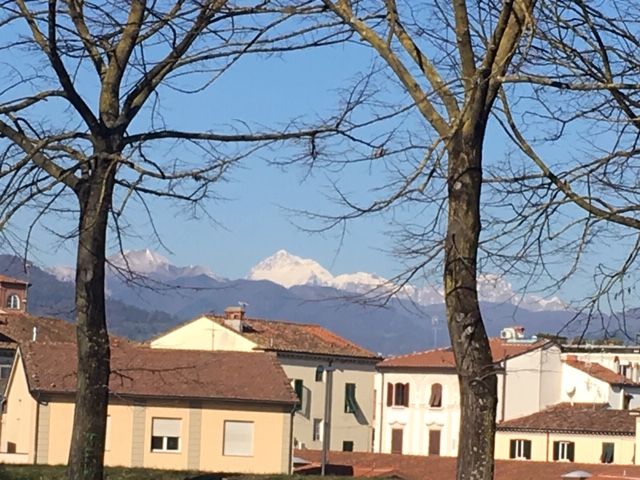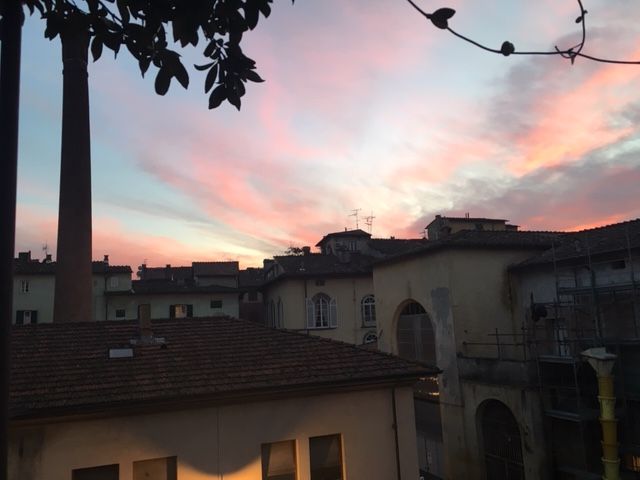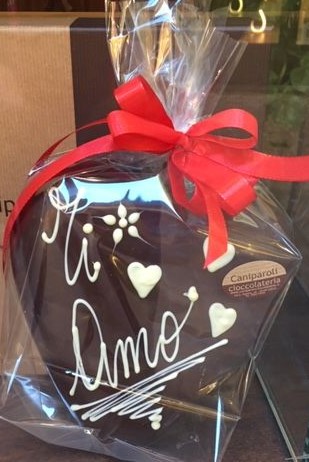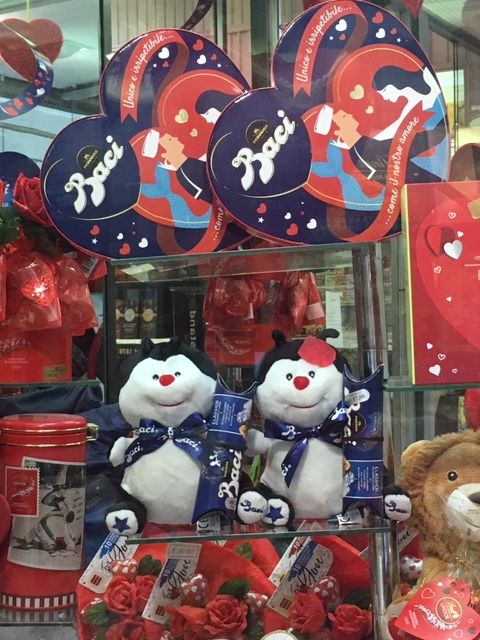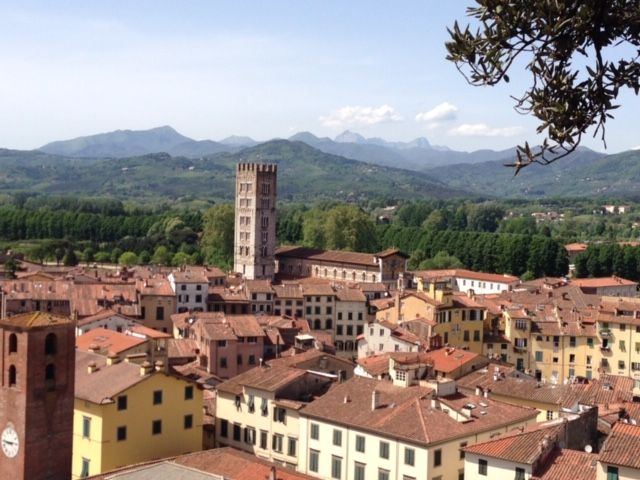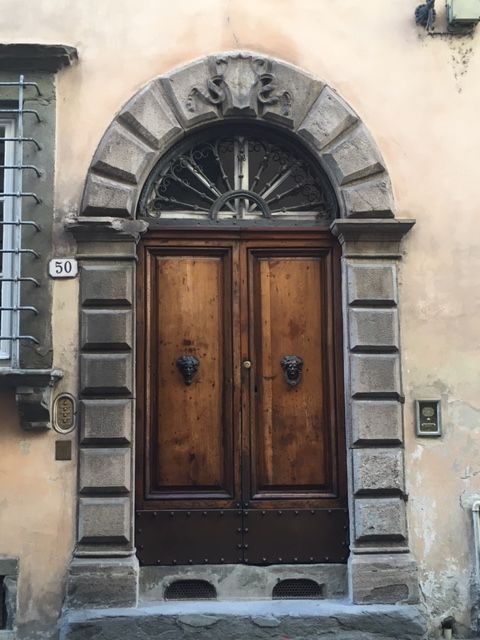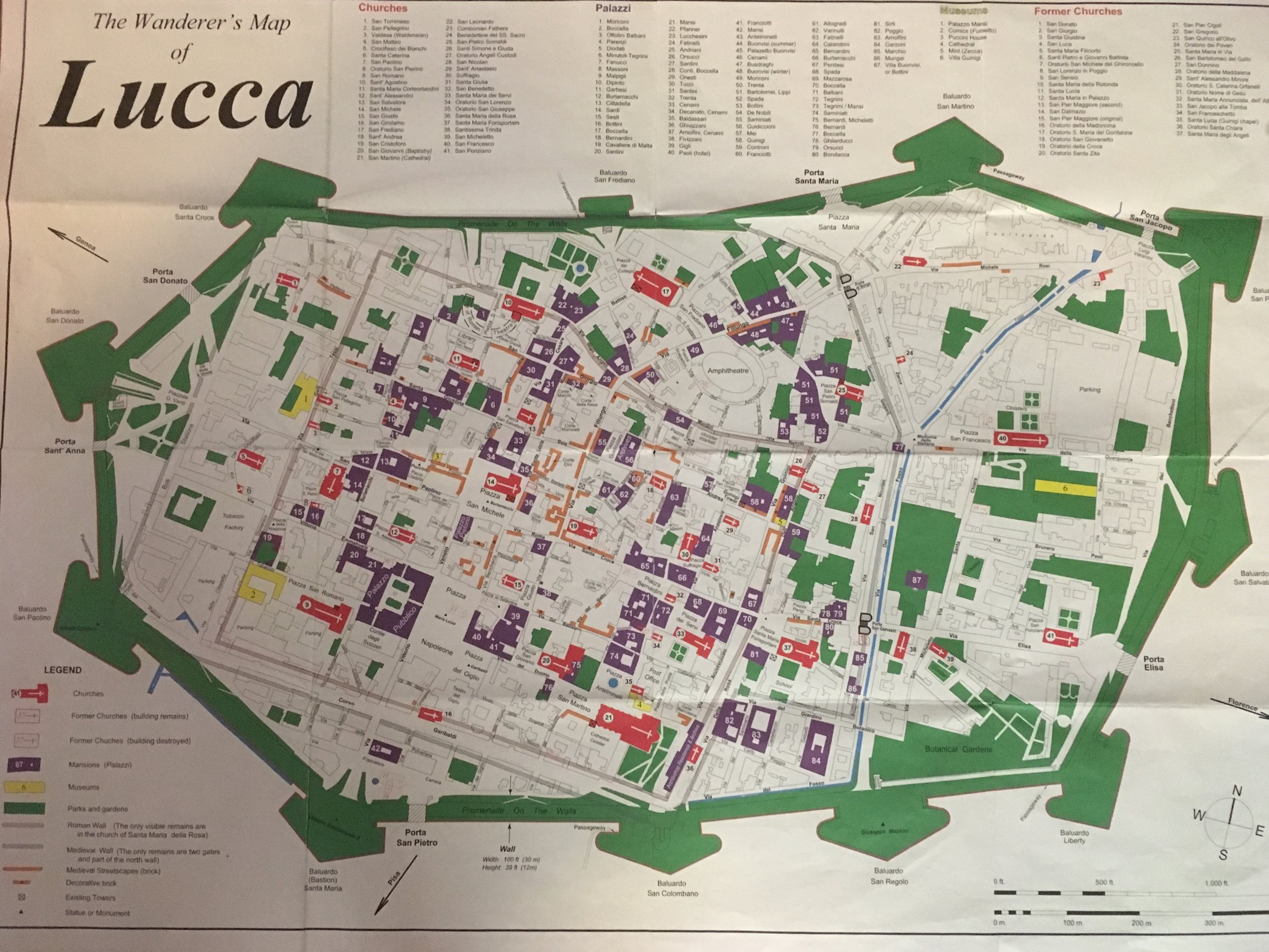Spring 2020
Spring is perhaps the most glorious time of year in Italy. The sun shines, plants bloom in sequence, beginning with the magnolias and then on to the wisteria. Later, the hydrangeas bud, blossoming as summer begins.
Magnolias in early bloom, just before the lockdown began, March 2020
Trees also bud and then begin to leaf. Wildflowers grow along stone walls throughout the countryside and Le Mura (Lucca’s historic walls) have their share of wildflowers as well. Flowers appear in window boxes and on terraces as people shop the traditional spring garden markets. Locals and visitors alike begin to revel in mild temperatures, enjoy walks along Le Mura, sip coffees at outdoor tables in pretty piazzas, make excursions to the countryside, and trips to those spring flower markets.
Buying flowers at the traditional Santa Zita Flower Market April 2019
At least, that is what spring is normally like here. This year, however, is anything but normal. I know it is spring because the calendar tells me the spring equinox has passed. And, in late March, Italy changed to daylight savings time. Easter has come and gone, though without the usual festivities. The days are longer and warmer. But, spending most of my time indoors, I find few visual clues to remind me that Mother Nature is shrugging off her winter sweaters for more colorful spring garb. It seems as though I am missing seeing spring unfold because of the quarantine restrictions. Judy, although she lives not far from me, is having a different experience both because of geography (she can see Lucca’s walls from her street) and because she has a dog and the rules here allow a bit more liberty for dog walking (see her post from last Monday for her perspective on spring). I am spending the lockdown in a relatively small (though lovely) apartment in the center of town (no views of the walls) and my outdoor walks until this week have been limited to the couple of streets around my apartment. For the most part I have only been able to imagine what is unfolding outside. Missing spring’s beauty hurts, but in light of the bigger tragedies unfolding around us it seems a small sacrifice.
A stone wall, somewhere in Tuscany, spring 2019
I do catch glimpses of spring as I walk to the market for groceries, across town to the cleaners, or around to my mailbox. And, I am lucky to have a view to a pretty courtyard and garden just across from my apartment.
Joanne feels lucky to see these pretty photinia bushes from her window.
More fortunate still are those who have a little garden space of their own, a huge bonus in a city like Lucca, especially during this quarantine. My friend Michael has such a garden and I am thankful that he shares photos of emerging bulbs and greening trees - it’s a sort of mental oasis! (Photos below by M. Boyd, used with permission).
So, to celebrate this unusual spring, I thought I would post some photos of springs past and present in and around Lucca. And - good news - as of May, because the lockdown has worked to decrease the spread of the virus, we are once again permitted to go for walks throughout Lucca. Today the walls will reopen. Joy! The wisteria may have faded, and we may all be wearing masks, but there is still a lot of spring to be enjoyed! -post by Joanne
Spring flowers in the Cinque Terre, spring 2018
Wildflowers along the fosso (canal) in Lucca, spring 2018









